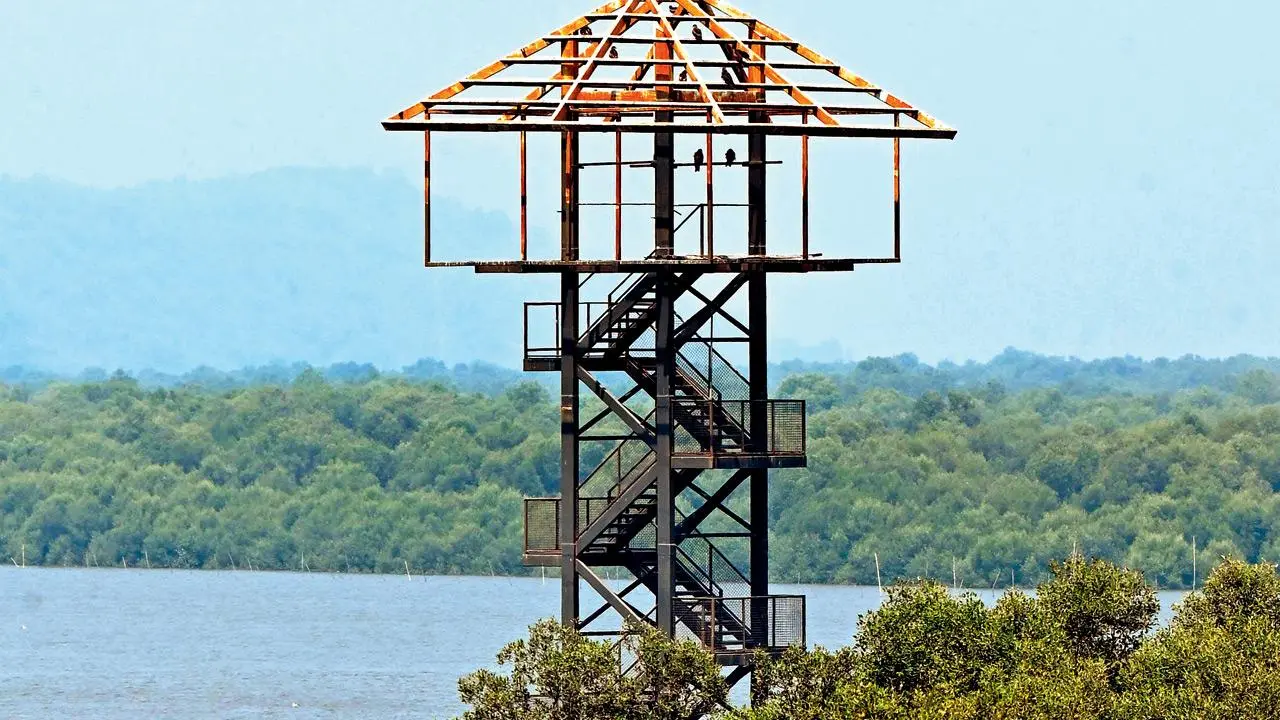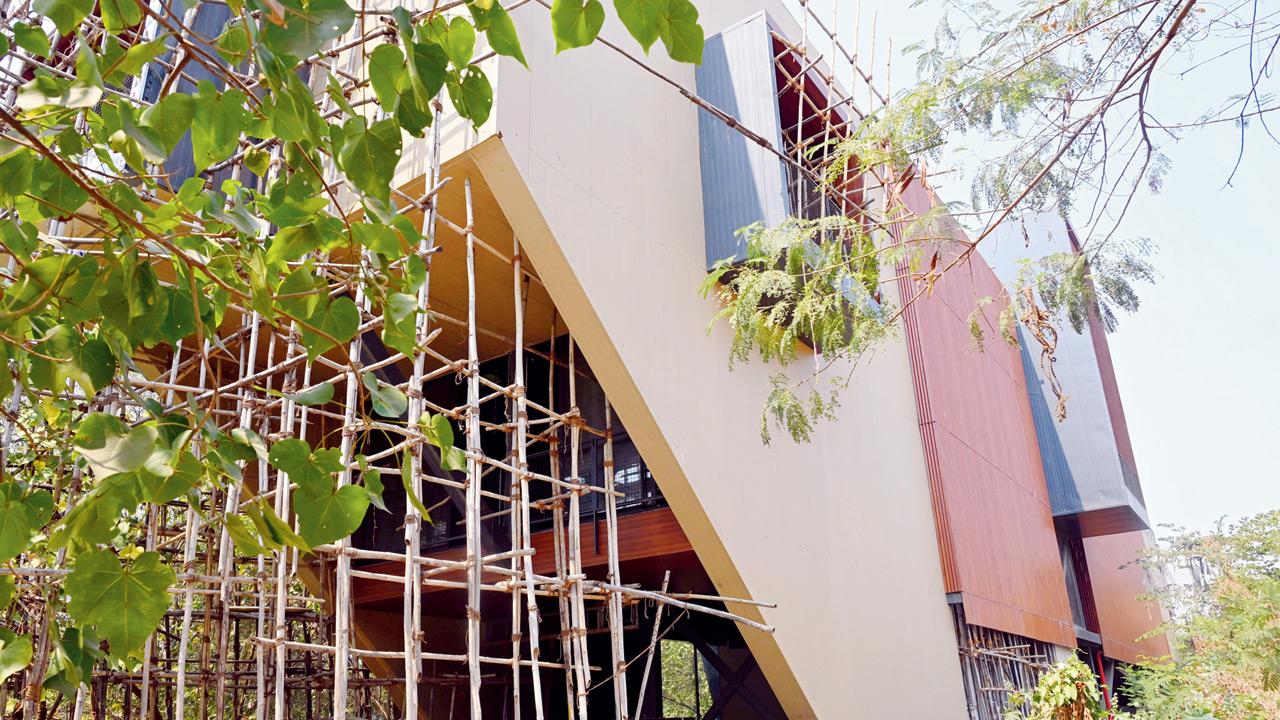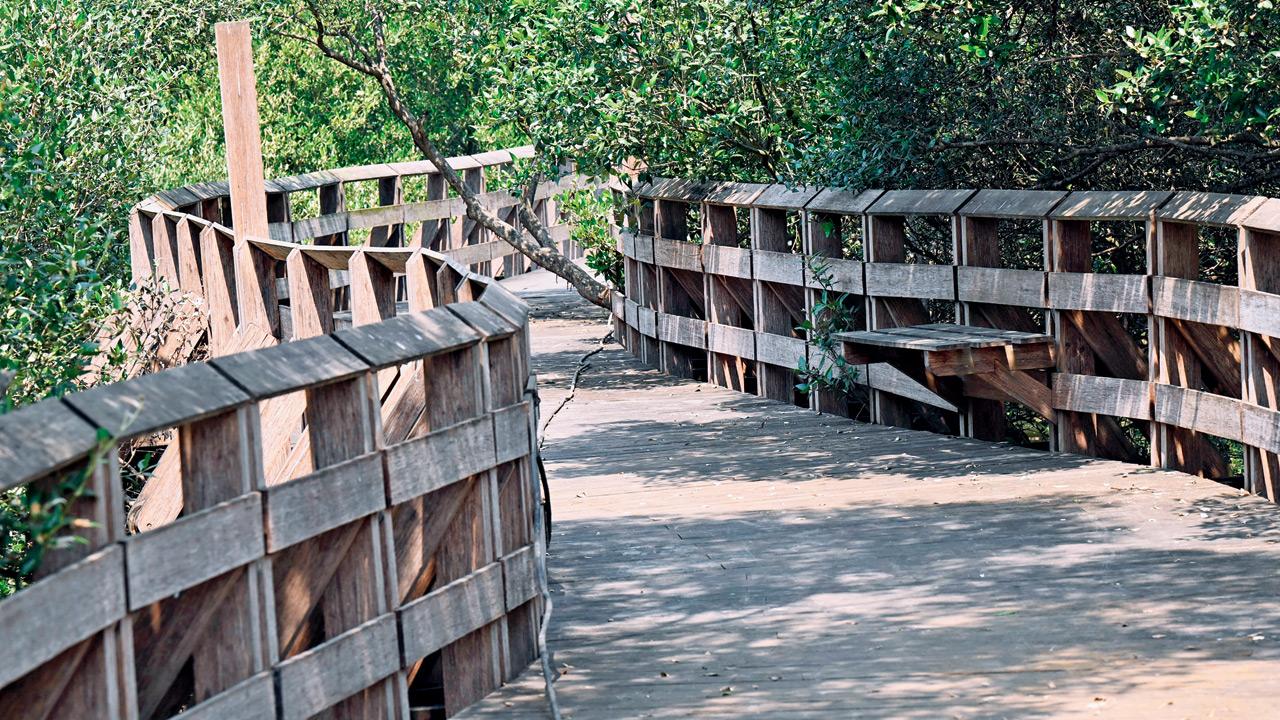The eco-tourism project features an 740-metre boardwalk, bird observatory, and nature interpretation centre to promote mangrove conservation

Watchtower facing the Gorai Creek
If everything goes to plan, by May 1, Mumbaikars and nature lovers will be able to witness the breathtaking view of the Gorai Creek from a watchtower erected within the creek. Another key attraction of the mangrove park, being developed by the Mangroves Foundation of the Maharashtra Forest Department, is a 740-metre-long boardwalk passing through the dense mangrove forest. On Friday, mid-day visited the Gorai area, where the mangrove park is taking shape, and observed that the work is progressing at a rapid pace.
ADVERTISEMENT
Deepak Khade, divisional forest officer of the Mangrove Cell-Mumbai, said, “The intention behind setting up a mangrove park with a nature interpretation centre, an 740-metre boardwalk through the mangrove forest, and a watchtower for bird observation is to educate and create awareness among people about the importance of the mangrove ecosystem and the biodiversity it supports. More than 90 per cent of the work is complete, and the construction of the multi-level nature interpretation centre is also progressing swiftly. If the remaining work is completed on time, we plan to open the park to the public on May 1, which coincides with State Formation Day.”

The nature interpretation centre under construction
The mangrove park spans eight hectares, with its highlight being the 740-metre boardwalk, constructed without cutting down a single tree. Once operational, guided mangrove trails and bird observatory sessions will be organised with the help of naturalists, who will educate visitors about the mangrove ecosystem and its biodiversity.
The park will also feature a touch-based information system, offering virtual reality insights into the flora and fauna of mangrove ecosystems. This project has been approved by the Maharashtra State Eco-Tourism Board and designated as an ‘Eco-Tourism Project.’
Mangroves dominate many coastlines in tropical and subtropical regions, acting as a bridge between terrestrial and marine environments. Mumbai has over 50 sq km of mangroves, possibly the highest among major cities worldwide. These ecosystems serve as vital coastal barriers, a fact that gained widespread recognition following the 2004 tsunami and the 2005 Mumbai floods.

740-metre-long boardwalk through the dense mangrove forest. Pics/Satej Shinde
According to the Maharashtra State Road Development Corporation (MSRDC) officials, every aspect of the park—from planning and material selection to construction—has been carefully executed to align with sustainable and environmentally responsible practices. Crucially, not a single mangrove tree was cut during construction; instead, they have been thoughtfully integrated into the park’s design, ensuring that the natural habitat is preserved and enhanced rather than disrupted.
Key Features
Nature Interpretation Centre: A state-of-the-art, two-storey building featuring a rooftop restaurant, a nature-themed gift shop, workshop rooms, a library, an audio-visual room, and an information centre. Solar panels will generate 80% of its electricity.
740-metre-long Wooden Walkway: A scenic path through the mangroves, offering an immersive experience without disturbing the ecosystem.
Viewing Deck: A specially designed deck providing panoramic views of the surrounding creek.
Bird Watching Tower: An 18-metre-high tower for bird enthusiasts to observe the diverse avian species inhabiting the area.
 Subscribe today by clicking the link and stay updated with the latest news!" Click here!
Subscribe today by clicking the link and stay updated with the latest news!" Click here!







